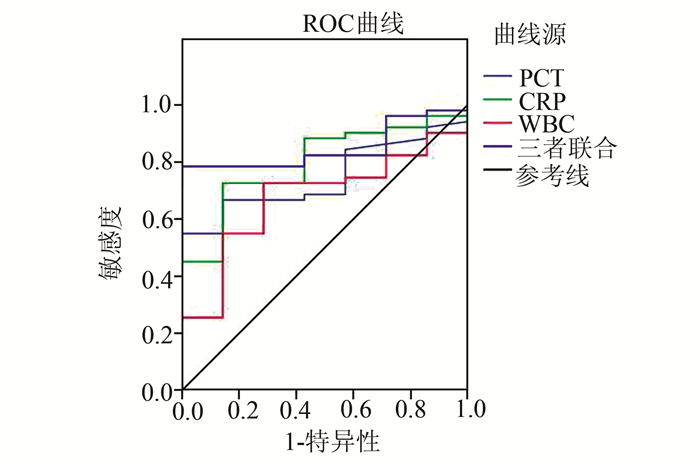2. 华中科技大学附属协和医院乳腺甲状腺外科 湖北 武汉 430022
2. Dept. of Breast and Thyroid Surgery, Union Hospital, Tongji Medical College, Huazhong University of Science And Technology, Wuhan 430022, China
近年来我国乳腺癌发病率持续上升,因其具有异质性,不同分子分型的乳腺癌临床表现或出现重叠,但预后却相去甚远。世界卫生组织(WHO)根据侵袭性乳腺癌的组织病理学特点将其分为19个亚型,其中多数非常罕见,不能真正反映乳腺癌的预后。目前临床上最常用的乳腺癌分型是2000年Perou等[1]所提出的根据雌激素受体(estrogen receptors,ER)、孕激素受体(progestrone receptor,PR)以及人类表皮生长因子受体2(human epidermal-growth-factor receptor,Her-2)和ki67的免疫组化结果,将乳腺癌分为Luminal A、Luminal B、Her2过表达以及基底细胞样型四种类型。随着乳腺癌分子分型研究的不断深入,Basal-like型乳腺癌与传统意义上ER、PR、Her-2阴性的三阴型乳腺癌的差异逐步显现。Basal-like型乳腺癌中存在少数表达有激素受体的患者,有数据统计只有80%-90%的三阴型乳腺癌中与Basal-like型重叠[2],因此Nielsen等提出根据CK5/6阳性,伴或不伴表皮生长因子(epidermal growth factor receptor, EGFR)的表达的标准,将basal-like型乳腺癌与三阴型乳腺癌区分开来[3, 4]。本研究运用组织芯片技术,对310例于2001年1月至2014年7月就诊的乳腺浸润性导管癌患者的临床病理资料进行回顾性分析,以探索乳腺癌不同分型间预后差异,达到便于临床医生制定乳腺癌治疗个体化方案,提高疗效的目的。
1 材料与方法 1.1 临床病理资料310点组织芯片购自上海芯超生物科技有限公司,收集了2001年1月至2014年7月就诊于上海某医院接受手术治疗的乳腺浸润型导管癌患者310例。纳入标准:原始病历资料中记载有患者的详细信息,包括术前检查(包括术前未接受任何治疗、年龄、性别、肿瘤位置、肿瘤大小、临床分期等),术后病理报告(包括术后病理类型,淋巴结转移情况),分子分型(ER,PR,HER-2,CK5/6),随访及生存时间(手术时间,生存状态,生存时间)。患者年龄29-88岁,中位年龄54岁,平均年龄56.45岁。病理分级Ⅰ级47例(15.16%),Ⅱ级181例(58.39%),Ⅲ级71例(22.90%),未分级11例(3.55%)。有淋巴结有转移者163例(52.58%),无转移者147例(47.42%)。
1.2 分子分型ER和PR阴性根据目前的瑞典临床指南定义( < 5%核阳性)。Ki-67表达阴性为 < 14%核阳性。Her2表达是根据标准协议[4]进行评估。对于免疫组化结果Her2(++)样本进行荧光原位杂交(FISH)。弱表达为IHC (0-+)或者FISH (-),强表达为IHC (+++)或FISH (+)。Luminal A型即免疫组织化学检测ER和/或PR阳性,Her-2阴性,ki67≤14%核阳性;Luminal B型即免疫组织化学检测ER和/或PR阳性,ki67>14%核阳性,或任何水平的Her-2阳性;Her-2过表达型即免疫组织化学检测ER、PR阴性,Her-2阳性;Basal-like型即免疫组织化学检测ER、PR、Her-2均为阴性,CK5/6阳性伴或不伴EGFR表达;Normal breast-like型即ER、PR、Her-2、CK5/6、EGFR均为阴性。
1.3 统计学方法采用SPSS 22.0软件进行统计学分析。生存率用Kaplan-Meier方法进行分析,资料的比较采用χ2检验,P < 0.05为差异具有统计学意义。
2 结果 2.1 310例乳腺癌患者病理资料分析310例乳腺癌患者中Luminal A型患者平均年龄为(56.27±13.39)岁,Luminal B型为(56.59±13.96)岁,Her-2过表达型为(56.17±11.12)岁,Basal-like型为(57.23±13.14)岁,Normal breast-like型为(54.80±12.57)岁,经单因素ANOVA检验不同分子类型患者年龄差异无统计学意义(P=0.983)。Luminal A型、Luminal B型、Her-2过表达型、Basal-like型、Normal breast-like型等所占比例分别为43.87%、24.19%、11.61%、17.10%、11.94%,如图 1所示。随访过程中,310例患者生存期2-162个月,中位生存期为103个月,发生终点事件的患者91例,Luminal A型、Luminal B型、Her-2过表达型、Basal-like型、Normal breast-like型发生终点事件例数分别为30、24、13、19、5例。不同分子分型乳腺癌患者中年龄、肿瘤大小、肿瘤部位及淋巴结转移等因素在不同分子分型中的分布无差异性(P>0.05),但乳腺癌病理分级、是否有CK5/6、EGFR以及肿瘤抑制基因53(Tumor Suppressor Gene 53,TP53)则存在组间差异性(P < 0.05)。
| 表 1 310例乳腺癌临床病理因素与分子分型的相关性分析 |

|
图 1 不同分子分型乳腺癌Kaplan-Meier无病生存曲线 |
Kaplan-Meier无病生存曲线所示(图 1),不同分子分型乳腺癌中,Luminal A型乳腺癌的生存率最高,其余各型依次是Luminal B型、Her-2过表达型与Basal-like型、Normal breast-like型,五种不同分子分型中预后间存在统计学差异(P < 0.05)。从单因素回归分析结果看,肿瘤大小、淋巴结转移、ER、PR、AR与乳腺癌的预后相关(P < 0.05),年龄、病理分级、HER2、CK5/6、Ki67、TP53等指标与预后间无统计学差异(P>0.05)。多因素结果看,肿瘤大小、PR可以作为乳腺癌的独立预后因素。
| 表 2 310例患者临床病理因素单因素COX回归分析 |
| 表 3 310例患者临床病理因素单因素COX回归分析 |
乳腺癌是多基因参与的恶性肿瘤,不同的分型表达着不同基因表达谱,具有显著的异质性。Wiechmann[5]等的研究结果显示,Luminal A型乳腺癌无病生存期最长, Luminal B型居后, Normal breast-like型次之,Her-2过表达型与Basal-like型最短,此结果基本与本组研究结果相符。
不同分子分型的乳腺癌有着各自不同的特征。目前各类研究均表明Luminal A型乳腺癌的预后相对其它几种亚型最好,这与Luminal A型乳腺癌中ER高表达,TP53突变率低,对内分泌治疗敏感密切相关。但Luminal B型乳腺癌亦属于对内分泌治疗敏感的肿瘤,可它相较Luminal A型乳腺癌预后差,估计与部分Luminal B型乳腺癌患者Her-2受体阳性、Ki67高表达等不良预后因素有关。Her-2过表达型乳腺癌患者临床分期较晚,多数患者脑、骨转移率较高,多数研究列入为较差的预后类型,本组研究中的患者均来自上海大型医院规范化治疗的患者,HER2阳性接受赫赛汀治疗方案,此类型具有治疗的靶点,因此预后优于部分三阴性乳腺癌患者,而Basal-like型乳腺癌ER、PR、Her-2受体均阴性,长期被划归于三阴性乳腺癌的范围,但它与三阴性乳腺癌并不相同。有研究数据表明,Basal-like型乳腺癌患者中约有5%-45%ER阳性,14% HER-2阳性,约占三阴性乳腺癌的80%-90%[2]。从病理特征上看,Basal-like型乳腺癌发病年龄较其他亚型低,高表达CK5/6,且有约85%的患者会有TP53的突变,约60%的患者伴有EGFR的表达[6],因此肿瘤分化程度低,自发现起便被认为是乳腺癌预后最差的亚型,且该分型对内分泌治疗不敏感,对靶向治疗效果不佳,全身治疗途径只能选择化疗,也是其预后不佳的原因之一。目前国内外对Normal breast-like型乳腺癌研究相对较少,该类型的表达与乳腺纤维腺瘤或正常乳腺组织相似,Rouzier[7]等对乳腺癌病人术前化疗效果进行分析,发现Normal breast-like型乳腺癌的预后较差,化疗后完全缓解率较其他分子分型相比有较低的趋势。但也有研究称Normal breast-like型乳腺癌患者多为绝经后妇女,肿瘤比较小,预后与Luminal A型乳腺癌相当[8]。本研究收录的Normal breast-like型样本较少,仅有10例,Kaplan-Meie生存曲线显示其预后较差,符合Rouzier等的结论,这可能与特异性针对Normal breast-like型乳腺癌的治疗方案缺如相关。
CK5/6是CK家族中一种中等大小的酸性蛋白[9],多在上皮来源的良恶性肿瘤中表达,目前已证明CK5/6对诊断肺鳞癌的灵敏度为78.9%,特异度高达97.7%[10]。研究表明,利用CK5/6和EGFR可将Basal-like型与Normal breast-like型乳腺癌从三阴性乳腺癌中分离开来,这能够间接提升三阴型乳腺癌定义的灵敏度和特异度。早期研究表明,乳腺癌中CK5/6的表达与其组织学分级、病程发生发展、总生存率及复发生存率密切相关[11],高表达CK5/6的乳腺癌有着较高的内脏转移率、脑转移率及局部复发率[12],即使术中病检未发现阳性淋巴结,患者仍有较高的复发率和死亡率[2]。有数据表明,CK5/6高表达的肺癌患者相对于低表达的患者有着更高的生存率[13]。本研究中310例患者CK5/6阳性率为21.61%(67例),而在Basal-like型患者中CK5/6阳性率高达49.06%,这既验证了CK5/6是乳腺癌不良预后的指标,又在一定程度上解释了Basal-like型乳腺癌预后较差的原因。
综上所述,应用免疫组织化学方法分析ER、PR、Her-2、ki67、CK5/6以及EGFR等蛋白表达,可对乳腺癌进行较为精准的分子分型,能够在临床工作中更为便捷地预测乳腺癌患者的预后,帮助临床医生个体化定制乳腺癌辅助治疗方案,准确预测患者预后情况。
| [1] | Perou CM, Sorlie T, Eisen MB, et al. Molecular portraits of human breast tumours[J]. Nature, 2000, 406(6797): 747-752. DOI: 10.1038/35021093. |
| [2] | Rakha EA, El-Sayed ME, Green AR, et al. Prognostic markers in triple-negative breast cancer[J]. Cancer, 2007, 109(1): 25-32. DOI: 10.1002/(ISSN)1097-0142. |
| [3] | Nielsen TO, Hsu FD, Jensen K, et al. Immunohistochemical and clinical characterization of the basal-like subtype of invasive breast carcinoma[J]. Clin Cancer Res, 2004, 10(16): 5367-5374. DOI: 10.1158/1078-0432.CCR-04-0220. |
| [4] | Charpin C, Secq V, Giusiano S, et al. A signature predictive of disease outcome in breast carcinomas, identified by quantitative immunocytochemical assays[J]. Int J Cancer, 2009, 124(9): 2124-2134. DOI: 10.1002/ijc.v124:9. |
| [5] | Wiechmann L, Sampson M, Stempel M, et al. Presenting features of breast cancer differ by molecular subtype[J]. Ann Surg Oncol, 2009, 16(10): 2705-2710. DOI: 10.1245/s10434-009-0606-2. |
| [6] | Savage K, Leung S, Todd SK, et al. Distribution and significance of caveolin 2 expression in normal breast and invasive breast cancer: an immunofluorescence and immunohistochemical analysis[J]. Breast Cancer Res Treat, 2008, 110(2): 245-256. DOI: 10.1007/s10549-007-9718-1. |
| [7] | Rouzier R, Perou CM, Symmans WF, et al. Breast cancer molecular subtypes respond differently to preoperative chemotherapy[J]. Clin Cancer Res, 2005, 11(16): 5678-5685. DOI: 10.1158/1078-0432.CCR-04-2421. |
| [8] | Calza S, Hall P, Auer G, et al. Intrinsic molecular signature of breast cancer in a population-based cohort of 412 patients[J]. Breast Cancer Res, 2006, 8(4): R34. DOI: 10.1186/bcr1517. |
| [9] | Sundstrom BE, Stigbrand TI. Cytokeratins and tissue polypeptide antigen[J]. Int J Biol Markers, 1994, 9(2): 102-108. |
| [10] | Whithaus K, Fukuoka J, Prihoda TJ, et al. Evaluation of napsin A, cytokeratin 5/6, p63, and thyroid transcription factor 1 in adenocarcinoma versus squamous cell carcinoma of the lung[J]. Arch Pathol Lab Med,, 2012, 136(2): 155-162. DOI: 10.5858/arpa.2011-0232-OA. |
| [11] | Potemski P, Kusinska R, Watala C, et al. Prognostic relevance of basal cytokeratin expression in operable breast cancer[J]. Oncology, 2005, 69(6): 478-485. |
| [12] | Cleator S, Heller W, Coombes RC. Triple-negative breast cancer: therapeutic options[J]. Lancet Oncol, 2007, 8(3): 235-244. DOI: 10.1016/S1470-2045(07)70074-8. |
| [13] | Ma Y, Fan M, Dai L, et al. Expression of p63 and CK5/6 in early-stage lung squamous cell carcinoma is not only an early diagnostic indicator but also correlates with a good prognosis[J]. Thorac Cancer, 2015, 6(3): 288-295. DOI: 10.1111/tca.2015.6.issue-3. |
 2016, Vol. 37
2016, Vol. 37
